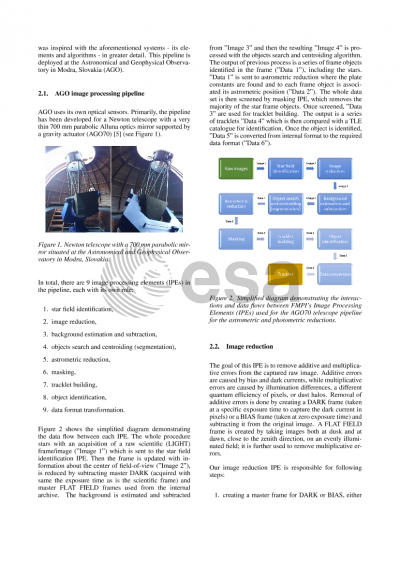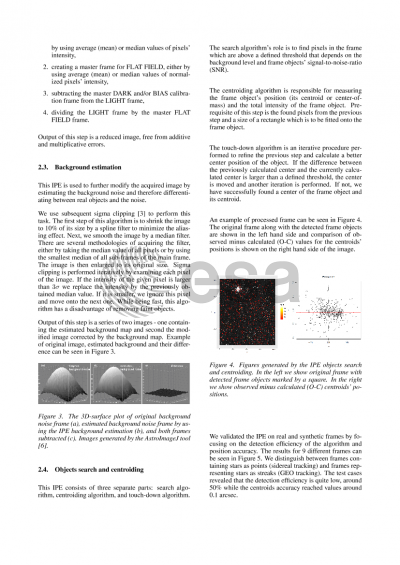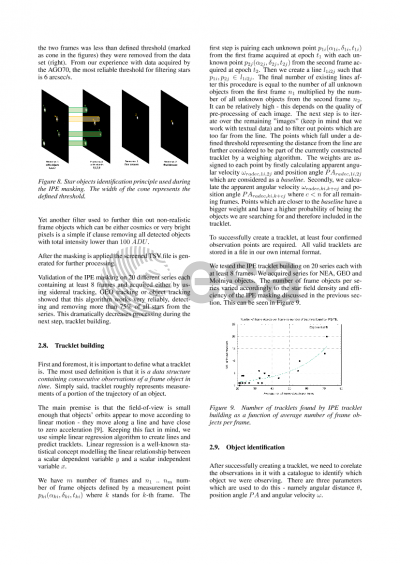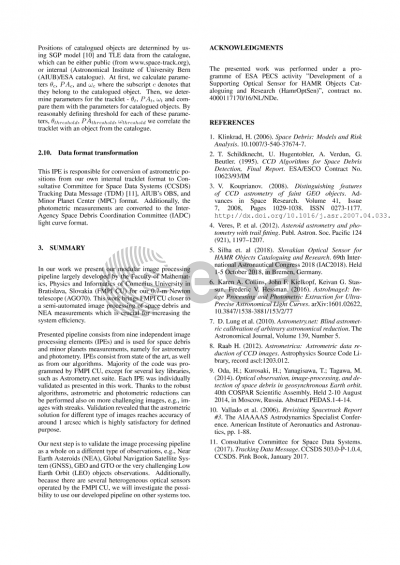Document details

Abstract
Slovakia became the 9th ESA European Cooperative State in 2015 and the first call to action for the Plan for European Cooperating State (PECS) were done shortly after. The Department of Astronomy and Astrophysics, part of the Faculty of Mathematics, Physics and Informatics of Comenius University in Bratislava, Slovakia (FMPI CU), was awarded with an activity focusing on transformation of a 0.7-m Newton telescope (AGO70) dedicated to amateur astronomical observations into a professional optical system for regular support of space debris tracking and research. The transformation includes the necessary hardware and software modifications.
The AGO70 has been installed at the FMPI's Astronomical and Geophysical Observatory in Modra, Slovakia (AGO) in fall 2016. There were several predefined objectives to be accomplished within the activity. First, it was imperative to adapt the low-level telescope control for the needs of space debris tracking. Second, the image processing software must have been developed in a modular way. The observation planning has been formulated according to the AGO70 system's hardware limitations with focus on GEO, GTO and GNSS like orbits. To verify the system's capabilities, the whole activity was concluded with an observation campaign.
A part of the presented study was to develop a full processing pipeline for the image reduction and object identification. The pipeline is based on modular approach and contains several different Image Processing Elements (IPEs). There are nine IPEs in total, namely image reduction, background estimation, objects search and centroiding, star field identification, astrometric reduction, masking, tracklet building, object identification and data format transformation. The idea is that once a series of images are processed by all IPEs, the output in form of tracklet is available in required forms, e.g. CCSDS TDM or Minor Planet Center (MPC) formats. If the tracklet belongs to a catalogued object, it is correlated with the catalogue. The IPEs were developed to process observations acquired for space debris objects with keeping in mind that they need to be applicable also to other objects, e.g., minor planets.
In our work we present the AGO70 system parameters, limitations, our observation strategy to space debris and near Earth asteroids (NEA), astrometry and photometry, and detail validation of the developed IPEs on real measurements. We demonstrate the full processing pipeline applied to astrometric and photometric series of space debris and NEA measurements. We confront the output data quality by comparing them to the results obtained by using conventional tools. All the presented work was performed to bring the AGO70 and future FMPI’s optical systems toward semi-automatic image processing to be used on space debris and NEA on a regular basis.
Preview







